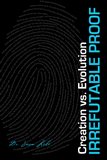
How Long Have Aborigines Lived in Australia?
Originally published in Creation 15, no 3 (June 1993): 48-50.
Examination of the question of how long have Aborigines been in Australia.
How long have Aborigines been in Australia? The answer commonly given is 40,000 years. Depending on which evolutionist is telling the story though, it could be 50,000 or 60,000 years—or even longer.
It should be remembered that such claims are always based on many assumptions (beliefs which cannot be proved to be true). In respect of radiocarbon dating, for instance, it is assumed that the earth’s production and decay of radioactive carbon are in balance (as long-age theory says they should be, but observation says they are not). A radiocarbon ‘age’ of say 30,000 years may thus actually represent a true age of only a few thousand years. When this erroneous age is assumed to be true, it is then used to assign an even older date to something found at a lower level, and so on.
Underpinning everything, of course, is the theory of evolution and its passengers. As the archaeologist Professor Brew put it, ‘If a C-14 date fits our theories, we put it in the main text. If it does not entirely contradict them, we put it in a footnote. And if it is completely "out of date", we just drop it.’1
It is instructive to visit a site such as the famous Kakadu National Park in Australia’s Northern Territory, where the well-known ‘X-ray’ style of rock paintings can be found. Modern house paint lasts only a handful of years, yet the visitor to rock-painting sites is told that many of these applications of a simple mixture of ochre and water are tens of thousands of years old!
Rapidly fading
Some of these ‘ancient’ paintings have had a silicon strip or dripshield applied around their rim to deflect water run-off, as they have been observed to erode quickly when it rains.
Of course, they may have been touched up from time to time, but to assume this happening consistently for tens of thousands of years further begs the question of whether these great ages are real. In fact, in another part of the same park one finds paintings of Europeans smoking pipes, and of sailing ships. The photo on bottom left of page 48 shows a Kakadu painting of a rifle.
Naturally, everyone is forced to accept these as ‘recent’. The incongruity is glibly passed over by referring to it as the ‘world’s oldest unbroken record of continuity of art’ or something similar. But the creationist explanation, that all the paintings are at most several centuries old, fits the facts at least as well—with no awkward contradictions like the fact that these rock paintings are seen to erode quickly in the absence of manmade dripshields.
Reasoning in circles
Evolutionists sometimes say that at least some of the Kakadu paintings must be tens of thousands of years old, because they show animals which became extinct tens of thousands of years ago. It seems obvious, however, that one evolutionary assumption is being used to prop up another. It is perfectly feasible that the animals in question only became extinct a few centuries ago.
Evolutionists are forced to ignore or downplay other evidence that the Aborigines have been here for a much shorter time-span. For example, many Aboriginal tribes have legends—long pre-dating their contact with missionaries—of a global Flood, sometimes with astonishing parallels to Scripture.2
There are also other Aboriginal stories which appear to be corrupted memories of the time before they separated from other peoples at Babel—for example, accounts of the creation of man and woman, and the dispersion of tongues at Babel. The stories of one tribe insist that this incident happened not in the Middle East, but near Cooktown, in Australia’s Far North Queensland.3 Not surprisingly, they have no cultural memories of Jonah and the fish, or of Moses crossing the Red Sea; it all ends with Babel, and they didn’t get it from the missionaries.
An ‘ancient’ art gallery discovered recently in Australia’s remote north-west Kimberley region has caused its evolutionist discoverer to postulate that more than a thousand years ago, some Christian seafarers must have reached the tribe. A newspaper article mentions only that the art is ‘closely linked with Christianity’. In personal correspondence, the discoverer would only reveal that the art contained motifs of ‘the Great Flood and the rebirth of the people from one family’.4
If in fact it turns out that there are no post-Babel stories in this ‘biblically inspired’ rock art, the theory that they were inspired by early Christian contacts would be hard-pressed to explain this. Why no New Testament motifs, for instance? It would be much easier to explain as just one more example of the Aborigines’ memory of the Flood.
Racism refuted
Modern biology has also revealed that the old evolutionary racist belief, that Aborigines have large biological differences from Europeans because of long periods of isolation, is no longer tenable. God has indeed ‘made of one blood’ all nations of men; it is now common knowledge that the genetic differences between all the various races are so minor that they can be represented as a series of very closely overlapping circles.
Unfortunately there is a strong emotional component to this issue of the Aborigines’ allegedly long stay. The perception is that 40,000 years somehow makes the Aborigines’ dispossession more immoral than if they had been here for only 2,000 or 3,000 years. The ‘ancient’ theme has also become closely linked, in Australia, with black pride and land rights, not to mention the added mystique (and therefore commercial appeal) when marketing such things as Aboriginal art and souvenirs. Even Aboriginal rock music of late has been given the ‘40,000 years’ hype treatment to help it sell.
Under such ‘fashionable’ social pressure, it is no wonder that each new ‘dating’ of the Aborigines seems to just keep growing older and older.
In reality, the weight of evidence is consistent with the fact that the Aborigines, as descendants of Noah’s family,5 and thus close cousins to the rest of humanity, have been here only a few thousand years—certainly less than four thousand.
Christ died for all the descendants of Adam—whether Aborigines, Europeans, American Indians, Africans, Eskimoes or whatever the label; ‘for all have sinned, and come short of the glory of God’ (Romans 3:23).
Footnotes
- Fully referenced in The Revised Quote Book, Creation Science Foundation, Sunnybank (Queensland), 1990, p. 23.
- See, for instance, Creation magazine Vol. 4 No. 3, pp. 9–12. Also, Funk and Wagnall's Standard Dictionary of Folklore, Mythology and Legend, New York, 1950.
- George Rosendale (Aboriginal Lutheran Pastor from Far North Queensland), personal communication.
- The Courier-Mail, Brisbane (Australia), 10 February 1992. Also G. Walsh, personal communication.
- See the chapter on the origin of races in The Answers Book for a detailed explanation. (Ken Ham, Andrew Snelling, Carl Wieland, The Answers Book, Creation Science Foundation/Master Books, 1990, chapter 8.)
Recommended Resources

Answers in Genesis is an apologetics ministry, dedicated to helping Christians defend their faith and proclaim the good news of Jesus Christ.
- Customer Service 800.778.3390
- © 2024 Answers in Genesis



